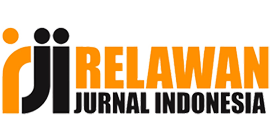KONTRIBUSI EKONOMI KREATIF TERHADAP PERTUMBUHAN EKONOMI BERBASIS LOKAL
DOI:
https://doi.org/10.31539/costing.v7i4.14184Keywords:
Ekonomi Kreatif, Pertumbuhan Ekonomi Lokal, Potensi Sektor Ekonomi KreatifAbstract
Penelitian ini bertujuan untuk menganalisis kontribusi sektor ekonomi kreatif terhadap pertumbuhan ekonomi berbasis lokal di daerah yang tengah berkembang. Menggunakan pendekatan kualitatif deskriptif dengan metode triangulasi data yang meliputi wawancara mendalam, observasi partisipatif, studi dokumen, dan kuesioner, penelitian ini mengidentifikasi potensi, tantangan, dan dampak dari ekonomi kreatif terhadap ekonomi daerah. Hasil penelitian menunjukkan bahwa sektor ekonomi kreatif, terutama subsektor kerajinan, kuliner, desain, dan teknologi informasi, memiliki potensi besar dalam mendorong pertumbuhan ekonomi lokal, meningkatkan pendapatan pelaku usaha, serta menciptakan lapangan pekerjaan. Meskipun demikian, sektor ini dihadapkan pada tantangan berupa keterbatasan infrastruktur, kebijakan yang kurang mendukung, dan keterbatasan akses terhadap pelatihan serta teknologi. Penelitian ini menyarankan perlunya kebijakan yang lebih terintegrasi, peningkatan infrastruktur, serta program pelatihan dan pemberdayaan UMKM untuk mengoptimalkan potensi ekonomi kreatif di daerah. Temuan ini juga memberikan implikasi bagi pengembangan kebijakan dan strategi yang lebih efektif dalam mendukung sektor ekonomi kreatif sebagai pendorong utama pertumbuhan ekonomi berbasis lokal.
References
Creswell, J. W. (2014). Research Design: Qualitative, Quantitative, and Mixed Methods Approaches (4th ed.). SAGE Publications.
Cunningham, S., & Higgs, P. (2006). Creative Industries Mapping: What’s New, What’s Next? Creative Industries Research and Applications Centre.
Denzin, N. K., & Lincoln, Y. S. (2011). The SAGE Handbook of Qualitative Research (4th ed.). SAGE Publications.
Fetterman, D. M. (2010). Ethnography: Step-by-Step (3rd ed.). SAGE Publications.
Flick, U. (2018). An introduction to qualitative research (6th ed.). Sage Publications.
Florida, R. (2002). The Rise of the Creative Class: And How It’s Transforming Work, Leisure, Community and Everyday Life. Basic Books.
Florida, R. (2005). The Rise of the Creative Class: And How It's Transforming Work, Leisure, Community, and Everyday Life. New York: Basic Books.
Glesne, C. (2016). Becoming Qualitative Researchers: An Introduction (5th ed.). Pearson Education.
Hauge, A., Andersen, H. T., & Hansen, K. (2023). Creative Economies in Emerging Markets: Local Development and Global Opportunities. Journal of Regional Development Studies, 15(2), 85-102.
Hauge, A., Knudsen, M., & Iversen, S. (2023). Digital Transformation and Creative Industries: Opportunities and Challenges. Journal of Digital Innovation, 18(2), 134-145.
Hauge, E., et al. (2023). Creative Economy and Local Growth: Mechanisms and Challenges. Journal of Creative Industries, 15(2), 145-162.
Howkins, J. (2001). The Creative Economy: How People Make Money from Ideas. London: Penguin Books.
Kementerian Pariwisata dan Ekonomi Kreatif. (2023). Laporan Kinerja Sektor Ekonomi Kreatif Nasional 2023. Kementerian Pariwisata dan Ekonomi Kreatif, Republik Indonesia.
Kementerian Pariwisata dan Ekonomi Kreatif. (2023). Laporan Statistik Ekonomi Kreatif Indonesia 2023. Jakarta: Kemenparekraf.
Markusen, A. (2006). Urban Development and the Creative Economy. University of Minnesota Press.
Miles, M. B., & Huberman, A. M. (1994). Qualitative Data Analysis: An Expanded Sourcebook (2nd ed.). SAGE Publications.
Patton, M. Q. (2002). Qualitative Research and Evaluation Methods (3rd ed.). SAGE Publications.
Porter, M. E. (1990). The Competitive Advantage of Nations. Free Press.
Pratt, A. C., & Jeffcutt, P. (2009). Creativity, Innovation and the Cultural Economy. London: Routledge.
Purbadhyana, S. (2023). Eksplorasi Potensi Ekonomi Kreatif Daerah: Kasus Produk Kerajinan Lokal di Indonesia. Jurnal Ekonomi Kreatif dan Inovasi, 11(1), 47-59.
Roca, M., Davies, P., & Wilson, J. (2023). Challenges and Opportunities in Creative Economies: A Regional Perspective. Creative Industries Journal, 9(4), 301-319.
Roca, M., et al. (2023). Infrastructure and Policy Gaps in Developing Creative Economies. Regional Economic Studies, 28(4), 387-401.
Scott, A. J. (2006). Creative Cities: The Cultural Industries and the Creative Economy. Urban Studies, 43(9), 1469–1485.
Santagata, W. (2010). The Culture Economy: Creativity and Human Development. New York: Routledge.
Silverman, D. (2015). Interpreting Qualitative Data (5th ed.). SAGE Publications.
Stake, R. E. (1995). The Art of Case Study Research. SAGE Publications.
Sutrisno, A. (2022). Peran Ekonomi Kreatif dalam Mendorong Pertumbuhan Ekonomi Daerah: Studi Kasus Yogyakarta, Bali, dan Bandung. Jurnal Pengembangan Ekonomi Daerah, 17(3), 132-144.
Throsby, D. (2010). The Economics of Cultural Policy. Cambridge: Cambridge University Press.
UNCTAD. (2023). Creative Economy Outlook 2023: Trends and Opportunities. Geneva: United Nations.
UNESCO. (2013). Creative Economy Report 2013: Widening Local Development Pathways. United Nations.
Yin, R. K. (2014). Case Study Research: Design and Methods (5th ed.). SAGE Publications.


